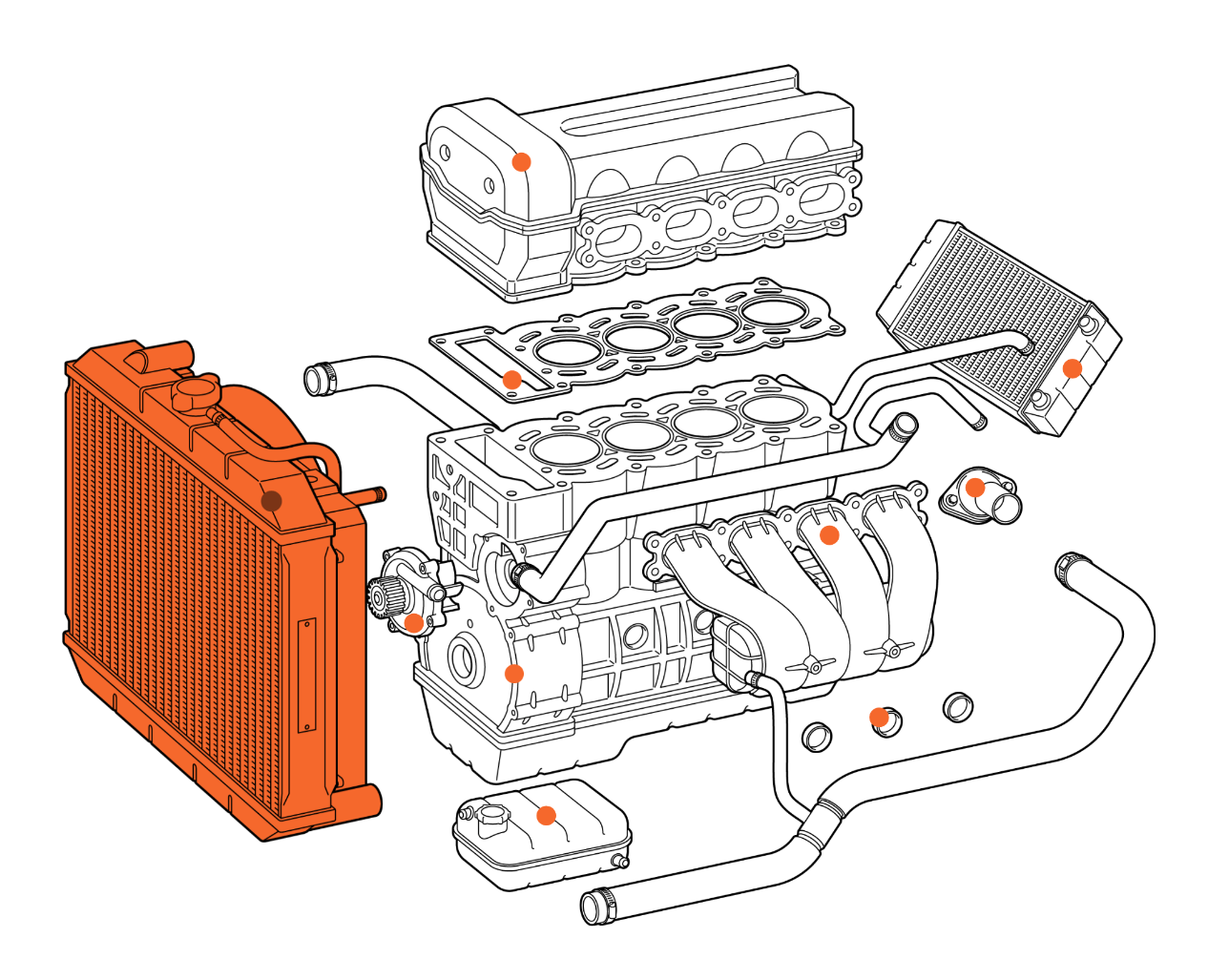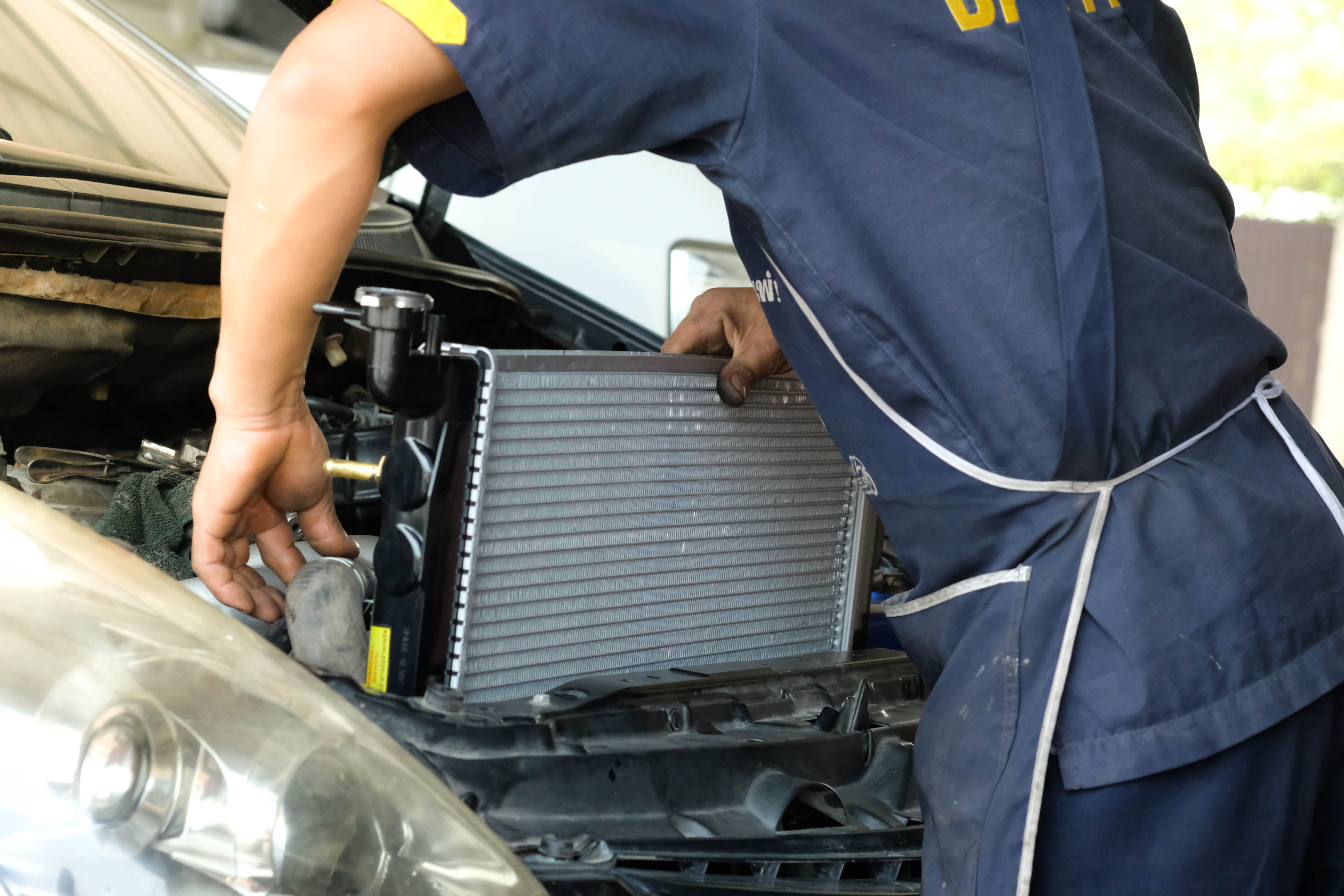How to Fix a Car’S Radiator: Easy Step-by-Step Guide
A car’s radiator is vital for keeping the engine cool. If it breaks, the car can overheat. Fixing a car’s radiator can seem hard, but it is easy with the right steps. This guide will show you how to fix a car’s radiator.
Why Fixing a Radiator is Important
The radiator keeps the engine from getting too hot. An overheated engine can break down. This can cause big problems and cost a lot of money. Fixing a radiator on time can save you from these issues.
Tools You Will Need
Before you start, gather these tools:
- Wrench
- Screwdriver
- Coolant
- Radiator sealant
- Gloves
- Bucket
- Rags
- Hose

Credit: www.kseal.com

Credit: www.louisvilleinfiniti.com
Step-by-Step Guide to Fixing a Car’s Radiator
Follow these steps to fix your car’s radiator:
1. Turn Off The Engine
First, turn off the engine. Let the car cool down for at least 30 minutes. This will make sure you do not get burned by hot coolant.
2. Drain The Radiator
Put a bucket under the radiator. Use a wrench to open the drain plug. Let the coolant flow into the bucket. Be careful, the coolant can be very hot.
3. Check For Leaks
Look for any leaks in the radiator. You can see them as wet spots or rust. If you find a leak, you will need to fix it.
4. Use Radiator Sealant
If the leak is small, you can use radiator sealant. Pour the sealant into the radiator. Follow the instructions on the sealant bottle. This can help fix small leaks without replacing the radiator.
5. Replace Damaged Parts
If the leak is big, you might need to replace some parts. This can include hoses or the radiator itself. Use a wrench and screwdriver to remove old parts and install new ones.
6. Refill The Radiator
Once the leak is fixed, you need to refill the radiator. Use fresh coolant. Pour it into the radiator until it is full. Make sure there are no air bubbles.
7. Start The Engine
Start the engine and let it run for a few minutes. Check for any leaks. If there are no leaks, you have fixed the radiator. If you see leaks, you might need to check the seal or parts again.
Tips for Maintaining Your Car’s Radiator
Here are some tips to keep your radiator in good shape:
- Check the coolant level regularly.
- Look for any signs of leaks.
- Flush the radiator every two years.
- Keep the radiator cap tight.
- Ensure the radiator fans are working.
When to See a Mechanic
Sometimes, fixing a radiator can be hard. If you are not sure, it is best to see a mechanic. They have the tools and skills to fix big problems.
Frequently Asked Questions
How Do I Know If My Car Radiator Is Bad?
A faulty radiator often causes engine overheating, leaks, or coolant discoloration.
Can I Fix My Car Radiator Myself?
Yes, with basic tools, you can often repair or replace a radiator yourself.
What Tools Are Needed To Fix A Radiator?
You’ll need a wrench set, screwdriver, drain pan, and new radiator or repair kit.
How Do I Drain My Car’s Radiator?
Locate the drain plug at the bottom and open it to let the coolant flow out.
How Often Should I Check My Radiator?
Check your radiator and coolant levels every 3 months or 3,000 miles.
What Are Common Radiator Problems?
Common issues include leaks, clogs, and rust. These can cause overheating and engine damage.
Can Driving With A Bad Radiator Damage My Engine?
Yes, a bad radiator can cause severe engine overheating, leading to significant damage.
Conclusion
Fixing a car’s radiator is important to keep your engine cool. Follow the steps in this guide to fix small leaks yourself. For big problems, see a mechanic. Regular checks and maintenance can help prevent issues. Keep your car running smoothly by taking good care of the radiator.





